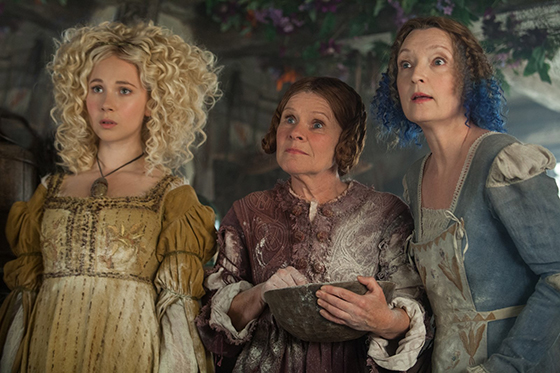re:View – Maleficent, you can curse me any day
I have about as much love for fairy tales as I have issues with them. In their original, uncorrupted form, traditional fairy tales are simply the best stories in life – as long as you can read all the annoying gender bias as a product of its time. But in their re-imagined form nowadays, most fairy tales are so woefully misunderstood and gender-stereotyped it makes my feminist heart – not to mention my literary one – ache and riot.
Why? Four words: Every Bloody Disney Princess.
Because no matter how quirky, independent and courageous today’s princesses are created by the likes of Disney and Pixar, it still all boils down to the damsel in distress, the evil old witch (emphasis on ‘old’) and the bloody knight in bloody shining armour. Granted, today he often enters the scene as the incapable, clumsy, awkward nerd, but in the end he still always saves the day. And, frankly, the more these film-makers are pushing the point of the ‘strong, independent princess’ – and don’t even get me started on the ‘strong female character’ – the more patronising and agonising the result. “Look! She’s a modern princess. She’s brave, she’s going out there into the world, she can punch a guy’s lights out (preferably with a frying pan).” Well, for the first ten minutes, including the first catchy tune. And then she gets herself into trouble, because she knows nothing of the world and of course she needs to fall in love. Enter The Man. Standard plot ensues.
Over the last ten years or so I’ve been seeking refuge from all this pseudo-empowered bullshit in fiction that takes a different approach to the traditional fairy tale, such as Emma Donoghue’s gorgeously queer collection of re-told tales, Kissing the Witch, Angela Carter’s The Bloody Chamber and some of the works by Robin McKinley. Meanwhile, the movies have largely remained unbearable.
Then along comes Maleficent. Of course I went to see it, because Angelina. Spoilers after the break, so read on at your own risk.
Maleficent was about to fall into the same old Disney trap. Beautiful woman grows up, falls in love, gets hurt, turns evil, goes on to destroy everyone. The trademark back story of the Evil Witch. Aggravated in this case by the very obvious fact that, while generally human looking, Maleficent is, in the eyes of the ‘legitimate’ humans at least, a dangerous freak due to her physical features, including the horns and the oversized wings. (But let’s not even get into the demonisation of female bodies at this point.)
Then, for contrast, there are the ‘good’ fairies: three cartoonish, thumb-sized and entirely unthreatening little women at their worst, bickering, mother-hen behaviour who prove physically, intellectually and emotionally incapable of raising a child. And of course the princess is fair and smiles sweetly at all times, and the queen is fair and doesn’t get a single spoken line in the script and eventually wastes away true queen-style, off screen and without so much as an explanation of her untimely death.
 Yes, deary, we’re actually as stupid as we look.
Yes, deary, we’re actually as stupid as we look.
I was about to actually scream when even The Bloody Prince arrived straight out of One Direction (hair and all). Give. Me. A. Break.
But then, just as I was starting to seriously lose faith in lead and executive producer Angelina Jolie (Surely she’s a feminist? What’s going on here? Why is this happening?), a new turn on the Sleeping Beauty plot evolves and saves the day. And, at least for Disney, it’s quite a revolutionary one: The Evil Witch and the Cursed Maiden form a deep and unlikely bond which not only becomes the solution (only ‘true love’s kiss’ can revoke the spell and wake up the girl, and – just to give you a clue – little Mr One Direction wasn’t up to the task) but, more importantly, the key that turns the Evil Witch stereotype upside down and redeems almost everything that’s wrong with the movie otherwise – and the previous adaptations.
Because it isn’t about The Man. It’s about the women – women who are not just stupidly good or irrevocably evil. Maleficent is a genuine character who maintains a sense of justice even in her villainy and is capable of finding the deepest love at the centre of her very revenge. She turns evil not for the sake of it but for a bloody good reason and she knows when to let go focus her energy on compassion and reconciliation.
 Sometimes it doesn’t take a prince.
Sometimes it doesn’t take a prince.
While it doesn’t make up for all the blatant gender- and stereotyping that goes on elsewhere in the movie – this is Disney, after all – the humanity of Maleficent’s character and the new interpretation of the ‘true love’ plot device make for a beautiful re-telling of the originally fairy tale.
And I am, of course, not at all biased on the basis that I worship Angelina Jolie for her talent, her beauty and her views.
Pens: 4 out of 5 for a very entertaining, beautifully shot film and a witch that is very welcome to kiss me awake any time.
